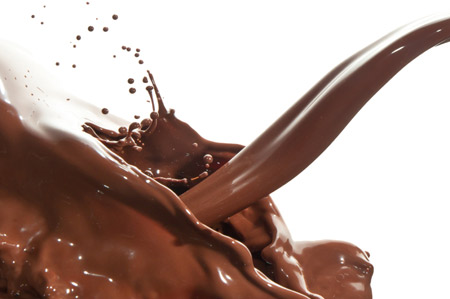 (Agrimoney) – Dairy prices recovered somewhat from 13-year lows reached in August, as measured by GlobalDairyTrade values, amid some signs of low values taking a toll on world milk production.
(Agrimoney) – Dairy prices recovered somewhat from 13-year lows reached in August, as measured by GlobalDairyTrade values, amid some signs of low values taking a toll on world milk production.
That made 2015, during which GDT prices fell by 3.5%, a far less catastrophic year for values than 2014, when they plunged by 48%.
Still, milk prices remain below cost of production for many farmers.
And GDT values remain at less than half those reached during an early-2013 rally, before the withdrawal of Chinese buyers, to rely on their stockpiles, sent the market tumbling.
Will supplies tighten next year sufficient to provoke a price revival?
In the first of its annual series of market outlooks for 2016, Agrimoney.com rounds up comment from sector experts.
DairyCo
“Milk production across the five key dairy exporting regions – the European Union, US, New Zealand, Australia and Argentina – is slowing.
“The biggest reduction was in New Zealand, where production could still fall further due to lower than average pasture growth during November.
“A slowdown in global milk supply is needed for market prices to begin to recover.
“However, significant levels of dairy stocks have built up during the past year. These stocks are expected to keep pressure on prices during the first half of next year, even after milk supply tightens.”
John Wilson, chairman, Fonterra
“Current, unsustainably low prices will continue to impact production levels globally.
“We support the consensus view in the market that an improvement will take place, but the market remains volatile.
“While there are signs of a recovery, particularly in China, we still need the imbalance between supply and demand to correct.
“That imbalance is starting to reduce with year to date production in the US up by only 1% and slowing, and New Zealand volumes expected to be down by at least 6% over the current season.
“In the EU, however, farmers are continuing to push production, currently up 1%.”
Rabobank
“Rabobank expects the brakes will be applied to milk production in export regions in the first half of 2016, though less dramatically and less evenly than we had in mind a few months ago.
Rabobank forecasts for prices of Oceania whole milk powder and (US Class II milk)
Q1 2016: $2,500 per tonne, ($13.28 per hundredweight)
Q2 2016: $2,500 per tonne, ($13.44 per hundredweight)
Q3 2016: $2,700 per tonne, ($15.10 per hundredweight)
Q4 2016: $3,200 per tonne, ($17.50 per hundredweight)
“A combination of poor weather and low prices will see milk production falling heavily in New Zealand. But we now anticipate that recent investments and less worse milk prices than expected will only allow for a small slowing in EU milk production momentum through the first half of 2016.
“We forecast big-seven export production growth to contract just 0.1% year on year in the period.
“At the same time, lower pricing and some improvements in income growth will foster improved buying in deficit regions.
“These dynamics will see excess inventories gradually eroded as the first half of 2016 progresses, with stocks approaching normal by around mid-year.
“[Upward] pricing pressure will still build over our forecast period, but we have delayed the timing of the recovery, and envisage a somewhat weaker trajectory than we did a few months prior.”
US Department of Agriculture
“Global dairy markets continue to struggle in the face of weak import demand and excess supplies.
“For 2016, low milk prices are expected to restrain growth in milk output, which is forecast to increase modestly by less than 1% declining by 640,000 tonnes in Oceania but offset by projected gains of 2.9m tonnes of milk production in the European Union, Argentina and the US.
“Although the pace of increasing milk production is forecast to slow, prices for such dairy products as skimmed milk powder and whole milk powder are expected to remain relatively weak.
“These products face strong headwinds due to the continuation of the Russian ban on imports of dairy products, the strong dollar, and weak import demand from China.
“Absent a change in these variables or the onset of unfavourable weather, prices will likely not improve significantly in the first half of 2016.”
US Dairy Export Council
“After a small decline in milk output from the top five suppliers in the first quarter of 2015, milk production grew 2.1% over the April-August period. The EU—led by Ireland and the Netherlands—has been the biggest contributor to growth.
“New Zealand farmers have pulled back, and US and Australian output is flattening. But we still need to see EU supply retract, and that is not likely to happen until the second quarter of 2016.
“China milk production is playing a role in China’s reduced import demand as well. USDEC estimates Chinese milk production rose 10% over the past two years. That represents another 3m tonnes of milk, most of which went into whole milk powder, stoking… inventory levels.
“China has worked through much of its inventory in the past few months, but we expect Chinese milk production to continue to grow.
“There are three basic keys here to strengthening global dairy markets: a pullback in milk production, destocking and demand expansion.
“Economic growth projections suggest we will not get a huge demand lift in the near future, so the bottom line is that 2016 appears poised to be a year of gradual rebalancing and destocking, setting the stage for tighter market conditions in 2017 and carrying over into 2018.”




